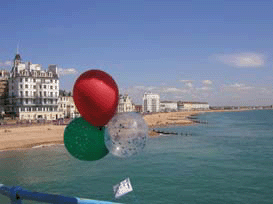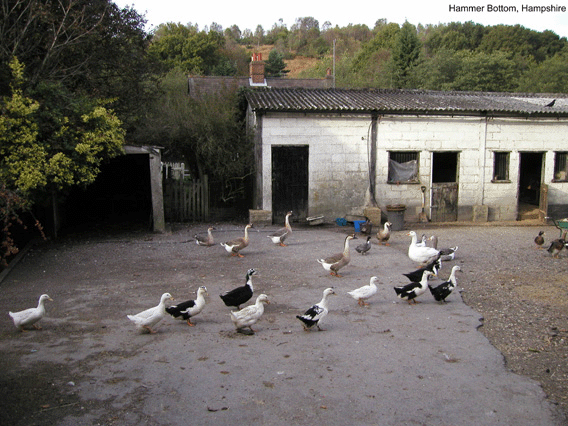


The routes described in these guides are made up from mainly statutory and (to a lesser extent) non-statutory paths and roads. Statutory paths are footpaths, bridleways and byways - ways that are marked as green lines on an OS map. Non-statutory paths are made up from the following:
Most regions of the country have a common on two and we all think of them as open areas where anyone can walk anywhere. In practice the law is much more complex than this, but for the purpose of these walks it means that we can choose interesting routes across the commons without having to stick to standard footpaths. Perhaps we should include in this category the city parks, seashores, Scottish highlands and suchlike. What is little known is that commons are usually privately owned, so they must be respected.
The Forestry Commission of Great Britain owns a huge acreage of wonderful woodland and, generally speaking, encourages their use for recreation. These walks often make use of them. Several other private forestry organisations implicitly allow similar use by walkers (and riders). The proposed 'privatisation' of the FC has raised anxiety that access might be restricted in some way. It is usually obvious from local conditions which forests encourage access. Remember that woodland routes can be closed at any time because of forestry operations. So you may find occasionally that you have to make a diversion from the given route.
A permissive path is a concession from a landowner and there is no right-of-way in law. These walks make good use of permissive paths. They are usually clearly signed as such but sometimes a permissive footpath is known only in the locality. Because of the popularity of horse-riding, there are also many permissive horse paths, often arranged by a quick informal agreement with local landowners. We assume that a permissive horse path implies a permissive footpath but the law may be unclear. In practice a landowner can hardly object to the gentle imprint of boots where he allows the stamp of horses' hooves. Mostly, the answer is a combination of common sense and observing other visitors and local people.
Many hillsides, meadows, lakes and forest (such as those of the Woodland Trust) are designated as open-access areas, giving visitors freedom to roam. It is always a joy to find them and to include them in a walk. We might also include in this category land owned by the National Trust, English Heritage and other public institutions.
These paths are found by observing local people, including dog owners and families. Many villages have a network of small passages, ways around playing fields, woodland fringes and residential roads. The villagers might not expect large numbers of outsiders to use them but walkers are always a welcome sight.
Whereas a book or an official walkers' website will err on the side of caution, the walks on this site sometimes assume that access is permitted when there is no explicit sign or rule and where a path is obviously well used. An example of this is an area of private woodland marked 'no horses' which does not logically say 'walkers welcome' but where it is reasonable to assume that people can walk there.
After all this is said, the walks on this site only use a small proportion of non-statutory paths. There are always alternatives that use only statutory paths. So if you are walking in a large group, such as a ramblers' club or scout troop, you should use your judgement and, if in doubt, stick to the official path.
If challenged by any person on private land to be told that you are not allowed to walk there:
• Be pleasant and brief, saying something like 'right - thanks for letting me know'.
• Turn around and exit the way you came, unless invited to continue.
• IMPORTANT: Do not quote the walk guide or this website! They are not an authority.
• Let us know! We will then immediately update the document.
If you are a landowner and find any place on any of these walks where you do not want to allow access, or where the permissive route is not quoted correctly, please contact us and we will immediately update the document. However, we would be grateful if you can indicate that you would permit individuals, pairs, or small groups, or if there are any other conditions that you would like us to insert in the walking guide.
See under hazards.